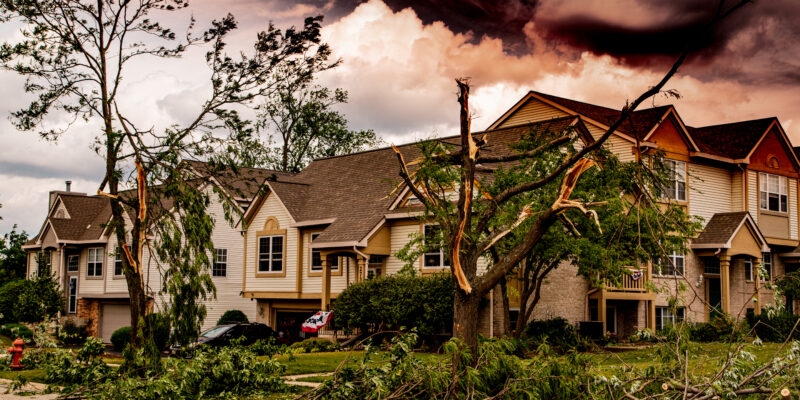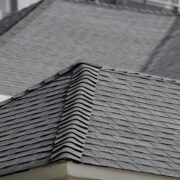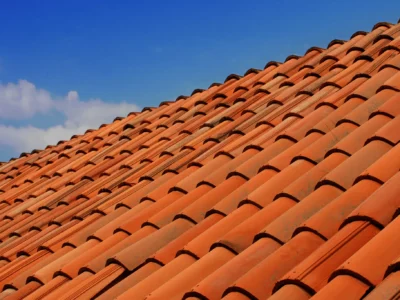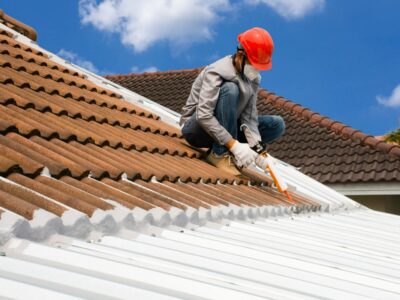Storms can cause significant damage to a roof. High winds can lift and tear off shingles, leaving the roof vulnerable to water leaks and structural damage. Hail can dent and crack shingles, weakening their protective layer and making them more susceptible to further damage. Heavy rain can cause water to pool on the roof, leading to leaks and water damage. Even lightning strikes can leave holes and structural damage.
Whatever the cause, it’s vital to address these problems as soon as possible to prevent further damage to your home. To guide you, here are some ways to deal with a storm-damaged roof:
1. Contact A Reliable Roofing Company
The first thing you should do when a storm damages your roof is to contact a reliable roofing company. Choose one with experience in dealing with storm damage and a good reputation. You can ask for referrals from friends and family or search online and visit the official website of reputable roofing companies operating in your area.
When you contact the roofing company, provide them with all the necessary information about the damage. This includes the type of roof you have, the extent of the damage, and any other relevant information.
The roofing company will send a professional to assess the damage and provide you with a quote for the repairs. Some companies make it even easier for you by offering free estimate after detailing your predicament on an online form. In most cases, they will provide an estimate describing the work that needs to be done and how much it’ll cost. If you want to save money, you can get a second opinion from another roofing company.
2. Document The Damage
Before the roofing contractor arrives, it’s essential to document the damage to your roof. Take photos and videos of the damage from different angles. It’ll help you to provide accurate information to the contractor and your insurance company.
It’s also an excellent idea to list any personal property that has been damaged due to the storm. This includes furniture, electronics, and any other items that may have been affected by the water leaks.
3. File An Insurance Claim
You can file a claim immediately if you have homeowner’s insurance. Contact your insurance company and provide them with all the necessary information about the damage to your roof. They’ll send an adjuster to assess the damage and provide you with an estimate for the repairs. Make sure to keep all receipts and invoices related to the restorations. Your insurance company may require this information when processing your claim.
4. Do Temporary Repairs
While waiting for the roofing company to arrive, you can perform some temporary repairs to prevent further damage to your home. Cover any holes or leaks with plastic sheeting or tarps. It’ll help to prevent water from entering your home and causing further damage. You can also remove debris from your roof, such as branches or leaves. This way, you’ll prevent clogged gutters and downspouts, which can lead to water damage.

When making temporary repairs, remember to document the damage before starting. Moreover, wear protective equipment and prioritize safety when doing repairs. If you’re unsure, leaving the repairs to the professionals would be best.
5. Consider The Type Of Roofing Material
When dealing with a storm-damaged roof, it’s essential to consider the type of roofing material you have. Different materials require different repair methods; some may be more susceptible to damage than others. Therefore, when you contact a roofing company, inform them of the type of roofing material you have. It helps them determine the best repair method and ensure the repairs are done correctly.
6. Prevent Future Damage
Once the repairs have been completed, take steps to prevent future damage to your roof. This includes regular inspections and maintenance, especially after severe weather events.
Inspect your roof for any signs of damage, such as missing or cracked shingles, and have them repaired as soon as possible. Keep your gutters and downspouts clean to prevent clogging and water damage. You can also consider upgrading your roof to a more durable material that can withstand severe weather conditions. It may be more expensive upfront, but it can save you money in the long run.
Regular maintenance and inspections can help you to identify any potential issues before they become significant problems. By taking these steps, you can ensure your roof is protected and your home is safe from future storm damage.
Conclusion
Dealing with a storm-damaged roof can be a stressful experience. That said, follow the ways and tips outlined in this article to ensure your home is protected and repairs are done quickly and efficiently. Moreover, with the help of a reliable roofing company, consider replacing your roof and upgrading to a more durable roofing material to protect your home from future damage, increase its value, and keep it secure for years to come.










[…] of your roof at least once every six months. This will enable you to determine whether any storm damage has occurred before more costly repairs are in […]